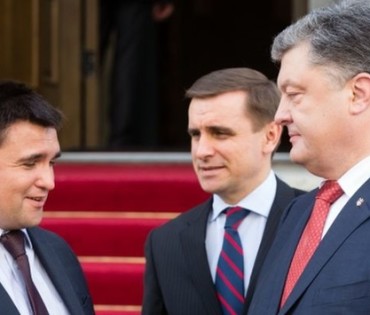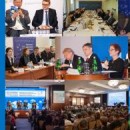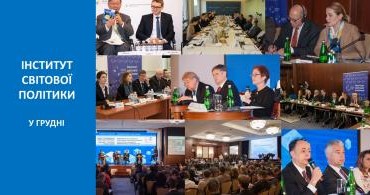The Institute of World Policy and TRUMAN Agency published the 4th edition of the “Foreign Policy Audit: Index of Relations” (April – June) report.
A full report is available upon request. Please, contact TRUMAN Agency if you would like to get it via email [email protected].
UKRAINE – U.S. Relations
Positive: +30.5
Negative: -1.5
Overall: +29
SUMMARY
Kyiv chose the principle that “little drops wear down big stones” as its approach to the United States, and it began to bring dividends in recent months. Ukrainian diplomats, like their counterparts in the US, were able to take advantage of the positive domestic political conjuncture in the United States. Perhaps for the first time in the history of Ukraine-US relations, the American president needed the Ukrainian one to shore up his position at home as much as the Ukrainian president traditionally needed his US counterpart. And perhaps for the first time since the times of nuclear disarmament, the position of the Ukrainian leader is as important to the White House as it is for Donald Trump today because of widespread suspicions of his ties to Russia. The most visible indication of how the Ukrainian side took advantage of this conjuncture in the US was the meeting between President Poroshenko and the American President. For the Ukrainians, it was critical to meet with the US leader before the planned talks between Vladimir Putin and Donald Trump in Germany. For the first time in Ukraine-US relations, the US President met separately with the Ukrainian Foreign Minister, Pavlo Klimkin, in the Oval Office, albeit outside his official schedule.
A number of contracts in the defense sector entered the final preparation stage at this time but, as it turned out, they were not signed when President Poroshenko came to DC with his delegation. Meanwhile, the US Embassy in Kyiv was busy preparing for the next important visit, the coming of Secretary of State Rex Tillerson to Ukraine. The secretaries of energy and defense are also expected to come to Kyiv in the next few months. In other words, complete dialogue has been restored, not just with the US Congress, but with the entire US Government.
The dynamics of relations between Ukraine and the US in this last quarter has demonstrated how effectively it is possible to work in any given foreign policy direction once it is prioritized at every level, including the presidency. The “America First” policy of the Ukrainian president does, however, carry some risks: assessments of Ukrainian-American dialogue at home depend largely on assessments of President Poroshenko’s overall policies. Those who support him see his American spearhead as effective, but those who oppose him do not.
Difficult as it has been, Ukraine and its allies in the US have managed to at least maintain status quo in relations. Unfortunately, this status quo is as unreliable as the positions of the 45th President on so many issues. It’s clear that Ukraine will witness an ongoing conflict between the consistency of US policy towards it and the inconsistency of the current US president. On a number of issues that are critical for Kyiv, it’s becoming clear that there is a US position and then there is President Trump’s position. In other words, the position of a political ally and the position of, at best, a neutral referee.
UKRAINE – EU Relations
Positive: +57
Negative: -14
Overall: +43
SUMMARY
Brussels and Kyiv had their ups and downs over April-June 2017. Finally, the visa-free regime with the EU came into effect and European integration became more tangible for ordinary Ukrainians. The EU is also finishing the process of ratifying the Association Agreement, which was delayed because of the Dutch referendum in spring 2016. The good news was topped up by the EU decision to raise the caps on zero-tariff imports that opens up new opportunities for Ukrainian business.
However, the relations between Ukraine and the European Union became strained in other areas during the second quarter of 2017. The EU is increasingly impatient about delays in a series of reforms that Ukraine has committed to deliver. These reforms are mainly stuck in the Verkhovna Rada and involve such areas as healthcare, customs, and more. Meanwhile, the Rada has also made decisions that breach the terms of the Association Agreement. One of the examples is a threeyear extension of an increased export tax on scrap metal. Although it is against the commitments made by Kyiv, the steel industry has been given a new lease on life thanks to such protective measures.
Fighting corruption remains the top priority for the EU and the Union’s efforts will mainly go into pressuring Ukraine to set up the specialized anti-corruption courts it has promised. This reform is crucial since the regular courts are not picking up investigations by the National Anti-corruption Bureau of Ukraine (NABU). Moreover, NABU itself is limited by an inability to collect evidence because it does not have the right to, say, tap phones. Both the EU and the IMF are insisting that NABU be granted such rights post-haste, especially since this was previously agreed.
Other issues discussed in this report are related to difficulties with setting the agenda for the Ukraine-EU summit and a mismatch in expectations between the EU and Ukraine regarding the transformation of the current Association Agreement.
UKRAINE – RUSSIA Relations
Positive: +1
Negative: -33
Overall: -32
SUMMARY
Ukraine-Russia relations reached a low of -32 for this quarter. On one hand, it looks like there has been some progress in this area, strictly quantitatively, given that last quarter this figure was at -61. On the other, it’s clear that there hasn’t been an improvement whatsoever: the difference is simply that QI 2017 was more packed with events, which automatically increased the overall index. What’s more, a number of events took place during the Q2 2017 made it clear there can be no improvement in relations. The situation at the line of contact remains unstable, with news about the dead and wounded almost on a daily basis. In April, a car carrying OSCE observers blew up, killing one American.
The three months being analyzed here showed a new trend in relations between the two countries: Kyiv has begun making decisions that it had been deliberately avoiding for the last three years. The Poroshenko Administration has decided to minimize the hybrid nature, meaning the ambiguity, of its own actions towards Russia, which had been giving its opponents plenty of reason to criticize it for showing weekness to the Kremlin. So, in May we saw the first expert discussion of a bill that, among others, would recognize the occupied status of certain counties of Donbas, known as ORDiLO, and will rename the Anti-Terrorist Operation. Over April-May, other decisions emerged that caused sharp reactions in Moscow: the banning of Russian social media and the institution of a language quota. In addition, Ukraine amended legislation to recognize the state’s movement towards joining NATO. And finally, the issue of instituting visa requirements for Russian citizens was raised again during the reporting period.
Ukraine and Russia saw the first rulings handed down by the International Court of Justice and the Stockholm Arbitration Institute in bilateral disputes. Each country interpreted the ruling as a victory for its side. Moscow made it clear it had no intention of complying with any of the measures in the preliminary decision of The Hague, that is, restoring the Tatar Mejlis as a functional institution. As to the Stockholm ruling, Gazprom suggested not jumping to any conclusions.
The next months promise to be just as strained. In September, a joint Russia-Belarus military exercise called Zapad-2017 or West-2017 is expected to out do last year’s Kavkaz-2016 exercise, which involved over 100,000 servicemen. There are also concerns that the Kremlin will resort to aggressive provocations to mobilize Russian voters in the upcoming presidential campaign. The fact that Election Day was moved to March 18, the day Crimea was illegally annexed, suggests that the Ukraine card will be actively played during this election.
RESEARCH METHODOLOGY
The publication “Ukraine’s Foreign Policy Audit. Index of Relations” is based on the monitoring and analysis of the events in the foreign policy of Ukraine by key areas: the EU, the US, China and Russia. The document is issued quarterly, to monitor the dynamics in the developments. Besides the experts’ observations, an important component of the research is exclusive interviews with Ukrainian officials responsible for certain areas in the foreign policy, Ukrainian and foreign diplomats. Furthermore, the document is based on numerous discussions with foreign opinion leaders and officials.
The report presents an analysis of foreign political events in Ukraine in each area, as well as that of the partner country’s (region’s) approaches to Ukraine within the period under research. The document discloses the context of the events and provides the assessment of factors that affect the country’s reputation. A forecast of the developments is made based on the facts presented.
Along with the qualitative analysis, the researchers have performed a quantitative analysis. Total score for the area is the sum of points for the criteria, which characterize the area within the reporting period. The expert group takes the BISS methodology as the basis: they have developed a clear scale for foreign policy events assessmenti.




Comments theme
Comments themeComments themeComments themeComments themeComments themeComments themeComments themeComments themeComments themeComments themeComments themeComments themeComments themeComments themeComments themeComments themeComments themeComments themeComments themeComments.